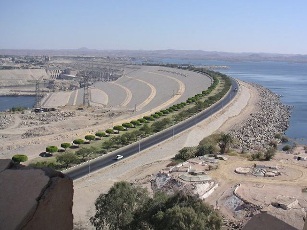Ethiopia faces power shortage due to poor rainfall
December 2, 2015 (ADDIS ABABA) – Ethiopia is likely to face severe power shortages after failed rainfall significantly lowered water levels of several power dams hence affecting their power generation capacities, officials disclosed on Wednesday.

The Horn of African nation has, since last week, been severely hit by power persistent cuts which, officials say, was inflicted due to technical difficulties.
“There has been a shortage of rain all over the country”, Bezuneg Tolcha, the energy ministry’s spokesperson told reporters in the Ethiopian capital, Addis Ababa.
“The dams have not collected as much water as they can collect”, he added.
Government officials have, however, not yet disclosed detailed causes of the black-outs which hit larger parts of the country for consecutive days, but have dismissed rumors alleging that excessive power caused the problem.
Officials said power cuts are most likely to crop up in coming months unless non-seasonal rains compensate the dams in raising water levels.
Ethiopia’s prime minister, Hailemariam Desalegn told the Reporter newspaper last week that severe water shortages have affected Tekeze hydropower project, which has the capacity to generate 300MW of power. It has also affected the 153MW Melka Wakena on the Wabe Shabelle river in east Oromia and Koka, Ethiopia’s oldest dam on the Awash River with an electricity generation capacity of 42MW.
The power cuts comes as Ethiopia battles to feed some 8.2 million of its nationals starving after El Nino weather phenomenon and drought, severely hit the Horn of African nation and other countries in the region.
The United Nations has warned that Ethiopians who will need food aid by 2016 could nearly double unless assistance was provided on time.
Ethiopia, Africa’s second most populace nation after Nigeria, intends to be a regional power hub. The horn of Africa’s nation is currently investing billions of dollars to construct several power plants to meet energy needs as part of its plan to become a middle income nation by 2025.
Ethiopia is currently building Grand Ethiopian Renaissance Dam, arguably Africa’s largest dam along the Nile River and near the Sudanese border.
Upon completion by 2017, the over 4 billion dollar power project will have electricity generation capacity of 6,000MW further enabling the country to export cheap and clean energy to its neighbouring countries and beyond.
Construction of Nile dam is currently at the half way mark and Ethiopia is preparing to re-divert flow of the Nile River to culverts for the second time.
In 2013, the country for the first time diverted flow of the Nile river triggering strong protest from the downstream countries particularly Egypt, which fears the dam project would eventually diminish its historic water share.
Recording an average 11 % economic growth over the past decade, Ethiopia is Africa’s leading and one of the world’s 10 fastest growing economies.
According to government figures, the country has considerably reduced level of poverty to 29.6% in 2012 and power exports in future are said to have positive impacts in the efforts to curb poverty.
(ST)
